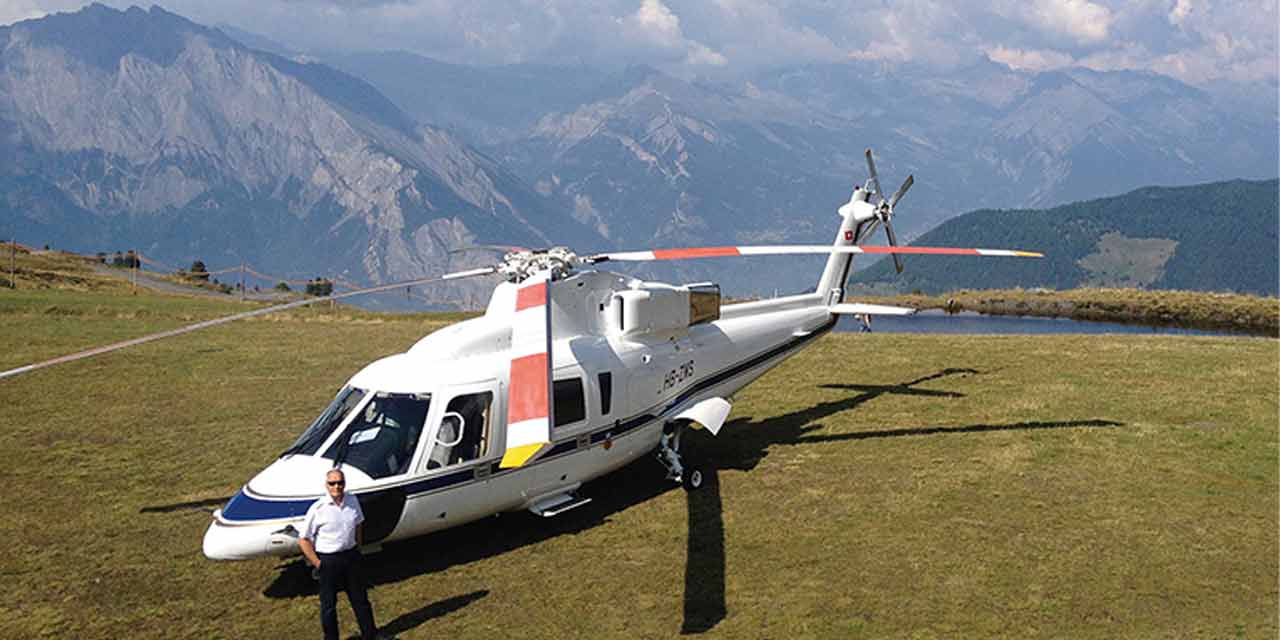STAYING CURRENT WITH THE STC PROCESS
The evolving helicopter industry is a constant churn of new technologies and out-of-the-box innovations being produced for new age aircraft. Legacy helicopters can risk being left behind, which is why modern aftermarket upgrades are a critical component for these aircraft. The legacy helicopters in operation today are proven, well known commodities with a great deal of life left in them, and many operators simply do not have the budget to replace their fleets with new age aircraft. The STC process is a reliable option for operators to modernize these legacy fleets in a relatively low-cost manner, but at times, the complexity of the process can be intimidating and may prevent some operators from taking this route.
WHY TAKE THE STC APPROACH?
Operators sometimes seek OEM-produced solutions in certain cases, but often the cost and time required to produce such solutions proves disappointing. In nearly all cases, the STC process proves to be less expensive than an OEM-produced solution.
In upgrading existing aircraft, you can maintain existing logistics and infrastructure with enhanced mission capabilities. Qualified STC providers are also well-versed in managing costs associated with the development and certification of a new product and can help you save on aircraft downtime requirements by introducing STC technologies in conjunction with major inspections.
Another extremely important benefit of the STC approach involves bringing dated aircraft into current standards of safety to protect crew, passengers and assets. STC providers are positioned to bridge the gap between different segments of the industry to bring forth the most robust solutions by tapping into existing technologies.
Operators may sometimes strategically use the STC process to come into compliance with various contract requirements, allowing them to compete for work they may otherwise be excluded from when pitted against newer machines. This approach can keep legacy platforms in the game, but also provide a competitive advantage for some operators.
HOW DO I CHOOSE AN STC PROVIDER?
The first step in developing an STC solution that meets your needs is simple: pick the right aftermarket provider. This is extremely important, because you want someone with a strong track record of delivering on STC programs, as the process can be complex and particularly risky when completed with an inexperienced provider. Learning the intricacies of the certification process, including determining the paths of least resistance, takes years of experience. Working with an experienced provider allows for program risks and mitigation plans to be identified and developed ahead of time, before you become too far invested in a project.
As you evaluate potential STC providers, here are a few things to look for:
Does this provider have a deep knowledge of the local airworthiness regulations? Regulatory requirements can be quite nuanced in various parts of the world, so an intimate understanding of the unique requirements that will impact your project will be critical to achieving certification in a timely manner.
Do they communicate effectively? Your selected provider will be responsible for interfacing with many stakeholders throughout the development and certification process, including you, OEMs, regulatory authorities and others. Excellent communication skills go a long way in minimizing surprises and ensuring program success.
Do they have an established rapport with the pertinent regulatory authorities and OEM(s)? The helicopter industry is extremely relational. You’ll want to partner with a provider who has built deep, trusting industry relationships over time.
Do they have reach within the industry to tap into expertise outside of their organization? A provider with a broad network and access to trusted industry experts can help ensure a successful outcome for the program. There is a wealth of knowledge and perspective across the industry, and knowing how to leverage that expertise is key to any developmental program.
You’ll also want to determine the extent of support they can actually provide. A competent STC provider with robust in-house engineering expertise can work with you to fully assess costs and requirements of integrating additional equipment and work with you and the OEM to achieve the expected functionality of a system without breaking your bank.
From there, you should plan to work closely with your selected provider in the STC development. An expert provider is one who will dive deep into your operation to understand the requirements and characteristics that are unique to your operation, then thoughtfully develop a solution to deliver the best value solution.
The best results typically stem from highly engaged operators and providers partnering together during the development, certification and implementation stages of a new STC program.
THE LAST WORD
For legacy platforms, the STC approach helps to achieve new age performance and safety benefits at a fraction of the cost of purchasing new. Ultimately, operators should evaluate the most effective means of accomplishing their specific aftermarket upgrade requirements and consult with an experienced provider to achieve the best result.
Author: Elvis Moniz
Vice President of Business Development for Airframe and Avionics Solutions Commercial Helicopter Programs
















